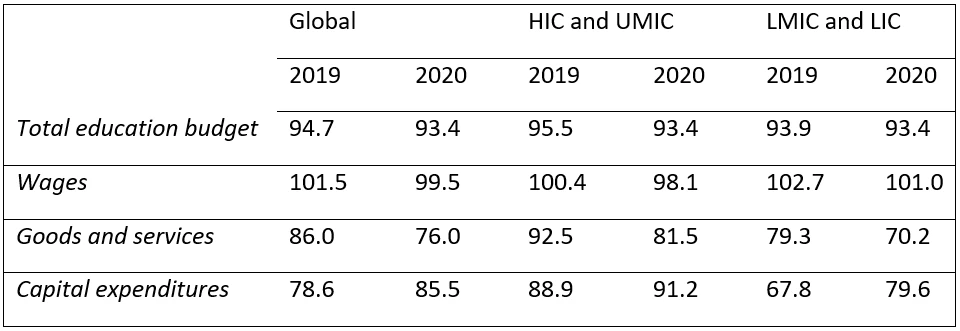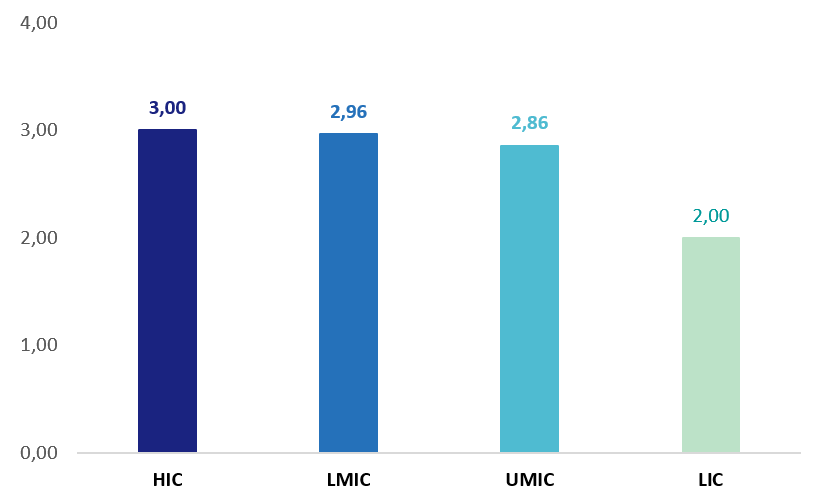 Budget execution challenges in the education sector can affect the availability of resources such as books, teaching and learning materials, and human resources. Copyright: Shutterstock
Budget execution challenges in the education sector can affect the availability of resources such as books, teaching and learning materials, and human resources. Copyright: Shutterstock
According to a recent report, public financial management (PFM) systems often struggle where it matters most for efficient service delivery: budget execution. More than two-thirds of governments struggle to maintain the planned composition of their expenditure throughout the fiscal year. This affects most sectors, especially sectors focusing on service delivery like education.
Understanding budget execution is important as underspending and overspending, of allocated education budgets can indicate broader challenges in efficiently delivering education services and pertinent challenges in the PFM system. Fund release delays; complex financial management requirements between the various levels (school, district, province, central levels); timely reallocation of funds between budget lines if needed; ineffective teacher deployment; and ineffective procurement processes, to name a few, can all inhibit the timely availability of resources such as books, teaching and learning materials, and human resources, at school level. These challenges ultimately impact student learning outcomes.
Research on the link between PFM and service delivery is limited
Globally, there is still limited research on the mechanisms through which PFM affects service delivery, and the impact of improved PFM on student learning outcomes. From the evidence available, improved PFM performance, how governments manage resource allocation, and the benefits of increased budget predictability have a limited but positive impact on education service delivery outcomes.
The extent to which the budget execution rate facilitates or stalls improvements in service delivery requires in-depth analysis. A few sources readily available for analysis are: 1) public expenditure reviews (PER) in the World Bank’s Education PER database; 2) finance trends in the Education Finance Watch 2022; and 3) data from Public Expenditure and Financial Accountability (PEFA) assessments.
What do we know about budget execution in education?
The share of education spending for most lower-middle- and middle-income countries has been either stagnant or on a slow upward trend (low-income countries) for the last 10 years, but during and following the COVID-19 pandemic, education spending declined in many countries. The pandemic affected execution rates, but not equally in all countries or in all cost categories. Declining execution rates were most prominent in goods and services spending (a 10 percent decline compared to pre-COVID data), while wages in the sampled countries did not see a similar decline. Wages, often accounting for 80 to 90% of education spending, are by far occupying the largest share of the (executed) budget. But relevant data on execution rates are often limited. A recent review of education PERs between 2015 and 2021 found that only 66% reported actual execution rates over time.
Table 1. Budget execution rates before and during COVID, overall, by type of expenditure and by country income group

In addition to PERs, we analyzed PEFA assessments conducted between 2016 and 2022 in 70 countries. Among other indicators, we estimated the difference between planned and actual budget expenditure, also known as “aggregate expenditure outturn.” The budget reliability indicators assess whether the government budget is implemented as intended and compares actual revenue and expenditures with the original approved budget. On average, low-income countries tend to have weaker budget reliability and operate with larger differences between planned and executed budgets. Interestingly, on average, the performance on budget execution in lower-middle-income countries is slightly higher than in upper-middle-income countries.
Figure 1. PEFA Indicator P1, Aggregate expenditure outturn
On average, low-income countries tend to have lower scores in the assessment, but there is a wide variation within this group. Differences in political-economy factors can drive these variations, but evidence suggests that these variables can explain only 40% of those differences. Within country, deviations often look different than the national average. Understanding country institutional arrangements and frameworks can shed light on why some countries might have stronger budget execution processes and lead to a better understanding of service delivery bottlenecks.
The implications for education and beyond?
The size of education budgets is important, but the ability of Ministries of Education to spend well, and execute appropriately, must not be overlooked. More money to a sector that spends ineffectively or not as expected is cause for concern and could exacerbate financial inefficiencies. Exploring the reasons behind the executed share of the allocated budget opens a window to understand whether systems are set up to implement budgets effectively and to pinpoint whether bottlenecks are present in the execution stage or elsewhere in the budget cycle. If there is low predictability in the release of funds, coordination of input purchases, distribution of textbooks, or expanding school infrastructure becomes challenging. Strengthening budget oversight is key for budget process credibility.
Data on budget execution is not consistently reported or is unavailable in many countries. A recent Open Budget Survey (2021) noted a decrease in the legislative oversight of budget execution, with more than half of the 115 countries surveyed not overseeing the progress of budget implementation. Budget oversight can assist with the effective use of resources. Transparency, citizen engagement, and accountability in the budgeting process result in less corruption, more revenue, and better and more efficient public service delivery.
More scrutiny of budget execution is a commitment to the global effort on transform education financing. While examining the deviations and discrepancies between planned and implemented budget is imperative to understand and tackle PFM bottlenecks, we should keep in mind that a narrow focus on execution rates can distract us from “discovering” challenges elsewhere in the budget cycle. Attention to all stages of the budget cycle, through the key drivers of learning “lens,” and identifying bottlenecks in the PFM system, is critical to ensuring efficient service delivery in the education sector and achieving learning outcomes at the national level.





Join the Conversation